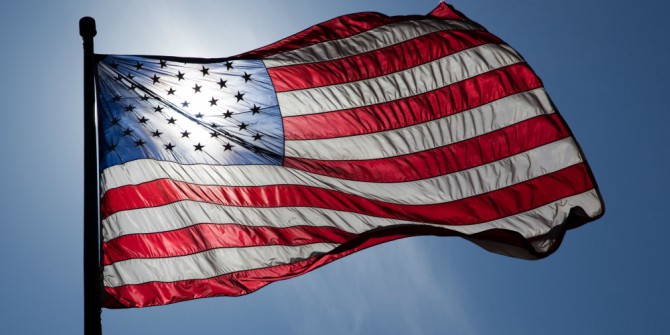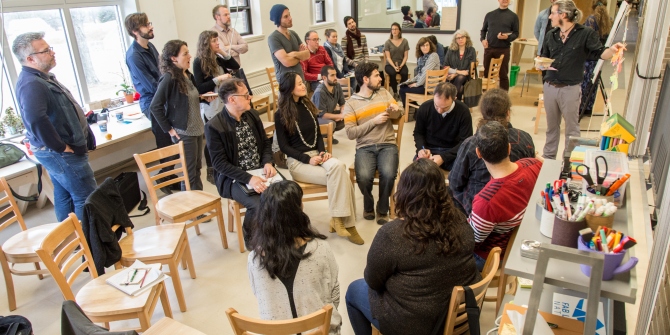
Policymaking often creates unintended consequences. But can disruptive innovation actually be spurred by President Donald Trump’s version of protectionism? Using the language of disruptive innovation, we observe that the long-term negative consequences of isolationism are actually an acceleration of US companies losing their own industries. Perhaps not even protectionism is what it used to be.
When it comes to economic decisions policymakers often decide based on some economist’s perspective. For instance, some economists are more liberal than others, some are in favor of subsidies, others aren’t, etc.
Most economists would agree that Mr. Trump’s ‘America First’ policy might not be such a good idea. They argue that over the long-term protectionism actually impoverishes everyone, and that there are plenty of studies that show how the world economy has improved when countries started collaborating with each other.
But for some reason, they are not so public about explaining the unintended effects of free trade. When two countries trade, the upper income class of the richer country often becomes wealthier. These are business owners (and the like) whose companies are making more money. Another positive effect is that the lower income class also experiences an increase in wealth via being able to afford more products.
The unintended consequence is what happens to the middle income class – the manufacturing jobs. Turns out that it is the poorer country (the one that has a comparative advantage in salaries) that gets most manufacturing jobs. Paradoxically, for developed countries, opening their economies has resulted in debates over whether CEOs are overpaid, having lower income citizens obsessed about buying cheaper and cheaper things and a growing mass of unemployed middle aged people that used to be highly specialized workers.
Maybe it’s time that policy makers realize that economic decisions are just too important to be left only to economists…
In the business administration perspective, we observe that what Mr. Trump wants to do is to ‘go back’. To ‘reinstall the operating system’ so to speak. But if globalization is not what it used to be, protectionism has also experienced its fair share of change. In strategy studies, ‘America First’ is the equivalent of a ‘focus strategy’: focusing your resources on what you do best. Indeed, supplying, manufacturing, outsourcing and buying American will increase wealth in the short term in America and produce better products that can be sold to wealthier customers, but is this the kind of ‘better’ that works in the medium and long term?
In disruptive innovation, an aggressive focus strategy signals an opportunity for entrepreneurs. When Ronald Reagan applied protectionism the world was a very different place. In the language of disruptive innovators, the US industries were significantly more underserved. Being an underserved industry indicates that customers will gladly buy any product improvement that a company can make. The 80’s and 90’s were the times of extended guarantees, or having a great personal travel advisor (a person) to arrange your vacation for you, of having your favorite brand of foods because they were a guarantee of quality and taste, etc.
But most US industries are not in that circumstance anymore, but rather, they are mostly overserved (underserved and overserved are the two extremes of a continuum). When an industry is overserved customers look for more affordable and simple solutions that can get the job done so they can move on with their lives. This is the era of convenience and affordability, the time not to massively improve on what you have but instead to consider new things.
The key factor that makes a strategy successful is the circumstance (a.k.a. context) where it is applied. In disruptive innovation, applying a focus strategy in an overserved industry has two effects. First, it will generate more and more overserved customers (more people will consider the products or services ‘good enough’). The second is that companies, by fleeing upmarket to focus on their best customers, are leaving more and more room in the low-end of the market for new disruptive entrepreneurs. A good explanation of how this mechanism works is what happened to the integrated steel plants when mini-mills entered the scene using a technology that was not good enough for the industry’s most profitable customers.
So, if you are an entrepreneur in the US, or you are abroad and have been wondering when is it a good time to start operating in the US, here is my recommendation: if Mr. Trump succeeds at introducing ‘America First’, US firms in your particular industry will start outsourcing less, insourcing production and focusing on their best customers. You will observe that their margins look better and better. It’s not that they sell a lot more but that they are much more profitable. Once you observe that in your industry; it’s time to create an independent business unit to cater to those low margin customers that no longer value product improvements on the dimensions that incumbents are offering.
These overserved consumers will value instead other improvements such as being more comfortable, or that the product is easier to use or more affordable. Incumbents on the other hand will be too focused on higher margin customers to justify a reaction against you, so they let you gain market foothold. That is the kind of situation from which you want to benefit. And there you go, you will have established operations in one of the most competitive countries in the world.
So, if Mr. Trump succeeds, and he ends up applying this program, by doing so, he will actually accelerate the pace at which US industries can be disrupted by new foreign firms. Turns out that “Reaganomics” was much less risky in Mr. Reagan’s time than today. This time it is not as simple as raising some tariffs or introducing a few import quotas. Now there are a myriad of entrepreneurs – patiently observing – waiting for their opportunity to disrupt you.
♣♣♣
Notes:
- The post gives the views of its author, not the position of LSE Business Review or the London School of Economics.
- Featured image credit: US flag, by Jnn13, own work, under a CC BY-SA 3.0 licence or GFDL via Wikimedia Commons
- Before commenting, please read our Comment Policy.
 Juan Pablo Vazquez Sampere is a professor of business administration at IE Business School.
Juan Pablo Vazquez Sampere is a professor of business administration at IE Business School.





